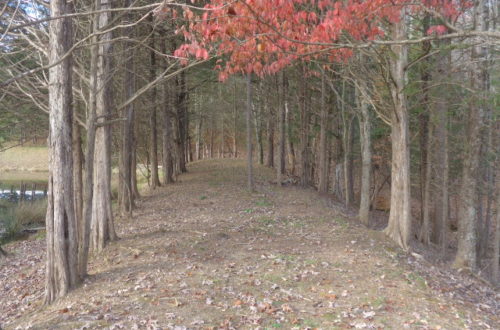
Homesteading Tool Must Haves – Forstner Bit
When it comes to boring deep holes in wood, it is hard to beat a Forstner Bit.
Spade Bits
You probably have some spade bits to go with your drill. These are fine for limited use. They dull easily and are not easy to sharpen. The spade bit seams to overheat quickly. They jam up suddenly at that can be a knuckle buster. Holes sometimes get out of round when the bit travels too quickly while drilling.
Hole Saws
You may also be familiar with hole saws. These are good for sheet goods like plywood and sheet rock, but are limited if you need to put a number of deep holes in wood. The wood plugs get stuck in the saw, the pilot bits like to break off if the drill jumps. These seem to get bogged down with sawdust creating more heat than you would like. The hole saw is versatile and gets the job done. But..
For clean, fast holes you need to upgrade to the Forstner bit. It eats through wood knots and cuts angled holes like nobody’s business. It cuts through various media, such as doors, without missing a beat. It doesn’t break easily. It stays sharp and can be resharpened. When used properly, it is a long lasting tool. These cut fast and will save you time. I have not had much issue with these binding up or bogging down a drill. These are smoother cutting due to them be self guiding. This advantage is due to the way the rim of the cutters is built. You will never go back once you try these babies out.
Disadvantages
The Forstner bit can be aggressive. You may underestimate how quickly you cut through a board and bust your knuckles. If you are not used to using a drill, you will need to carefully practice to get used to how this bit cuts, especially if you get up over an one inch hole. These are also best with a corded drill as they use a lot of torque and will run down most battery operated drills quickly. You also need to look out for any embedded metal such as nails or screws as these can chip the hardened cutting surface of the bit.
Costs
A good tool will always cost you less in the long run. You can get a lifetime of use out one of these bits. They cost more than spade bits but you will be using it for much longer than the more disposable spade bit. The increased efficiency is significant if you value your time in monetary terms. I suggest finding a set which drives the cost down per bit. A generic set should perform for the average homestead but certain name brands will leave you with a quality set of bits that will certainly be passed on to the next generation.
Best Sizes:
If you are only going to have one size of Forstner bit I suggest a 1 inch or 3/4 inch bit as you will get the most mileage in everyday use. If you are going to run 2″ drainpipe and/or install lock sets into door slabs you must have the 2 1/8″ bit. If you are never going to be drilling doors I might go with a 2 1/4″ or 2 3/8″ Forstner bit for both 1 1/2″ and 2″ drain pipe.
Restrictions:
I would use a hole saw for metal. The smaller teeth can cut in a more controlled and predictable way. I would not use if you are likely to hit embedded metal in wood. Use carefully around plumbing, electrical and other important things you don’t want to cut. Hollow core doors may like a hole saw better, depending on the construction. The long pilot of the hole saw may give an advantage to the average user, especially on wimpy interior doors.
I use these almost exclusively when installing electrical or plumbing into wood framing. I also use these bits quite a bit when I build a greenhouse. These bits are short and are useful when working in those odd tight spots that plumbing always seems to demand. When in cramped quarters a fast cutting bit that hogs through any type of wood is helpful to reduce time and the stress of fighting a drill that is cutting slowly. If you deal with cutting holes for lock sets then you never go back to hole saws, especially on exterior doors.
~Wiggle
I recently used one of these bits on my greenhouse project. Check it out:




